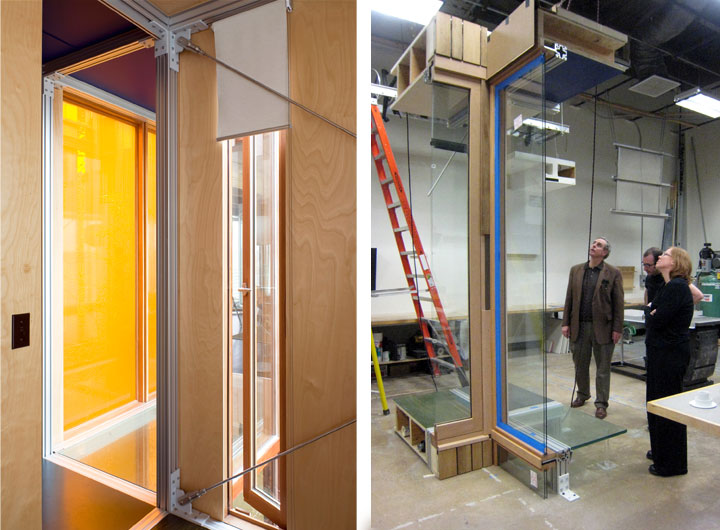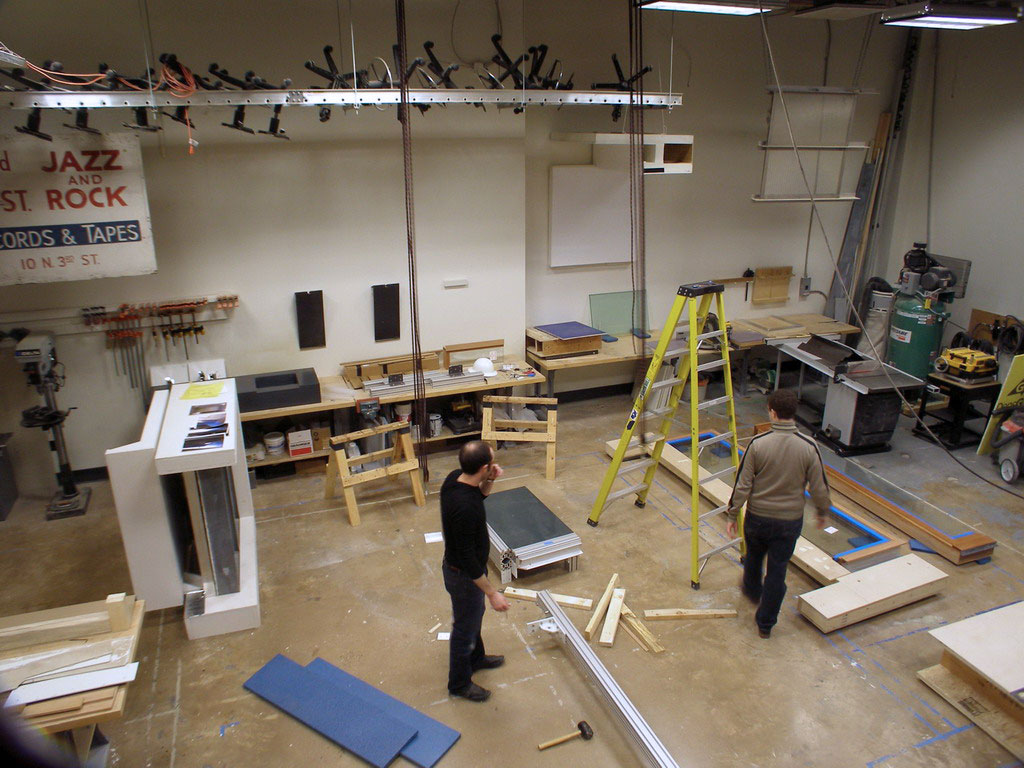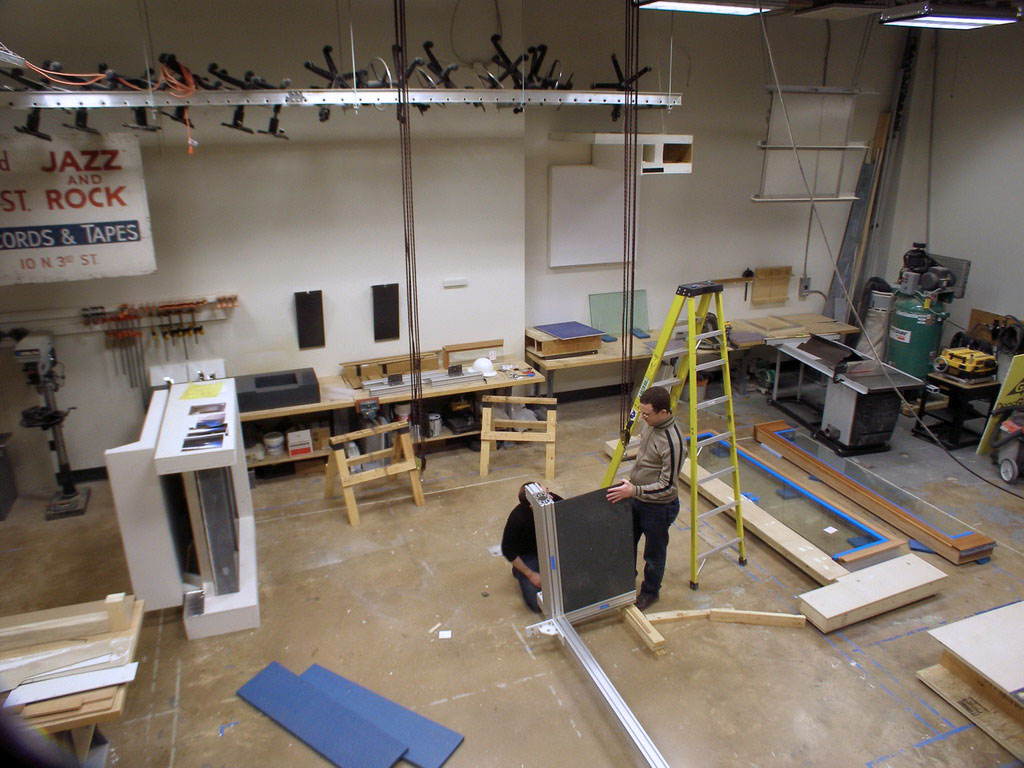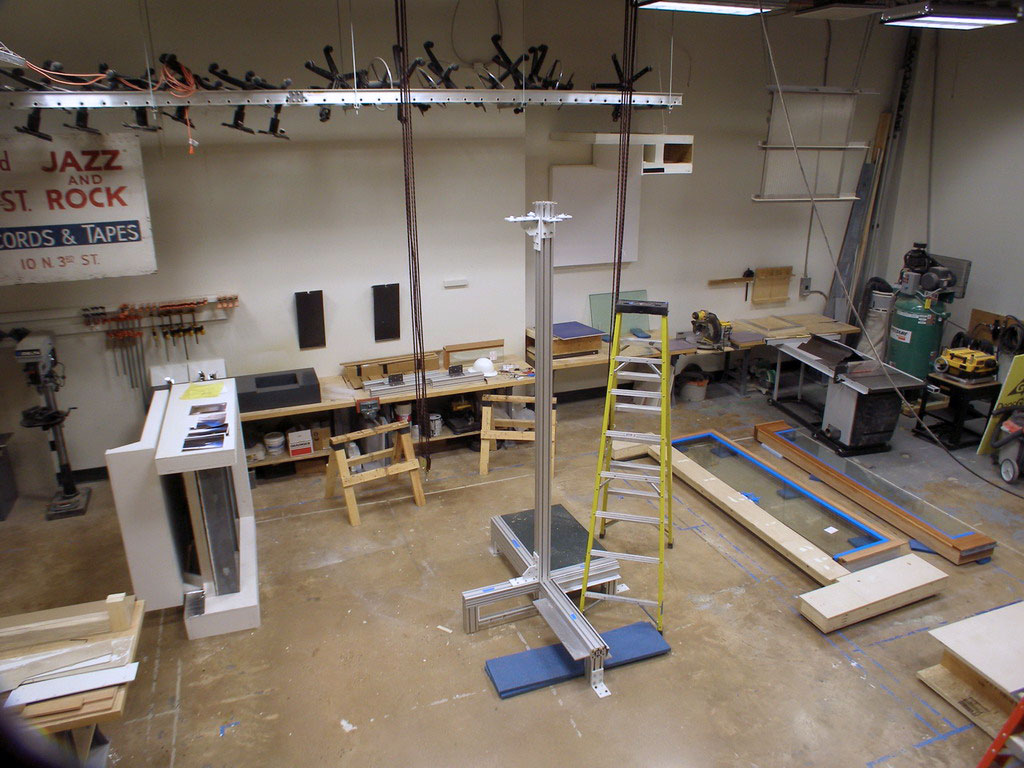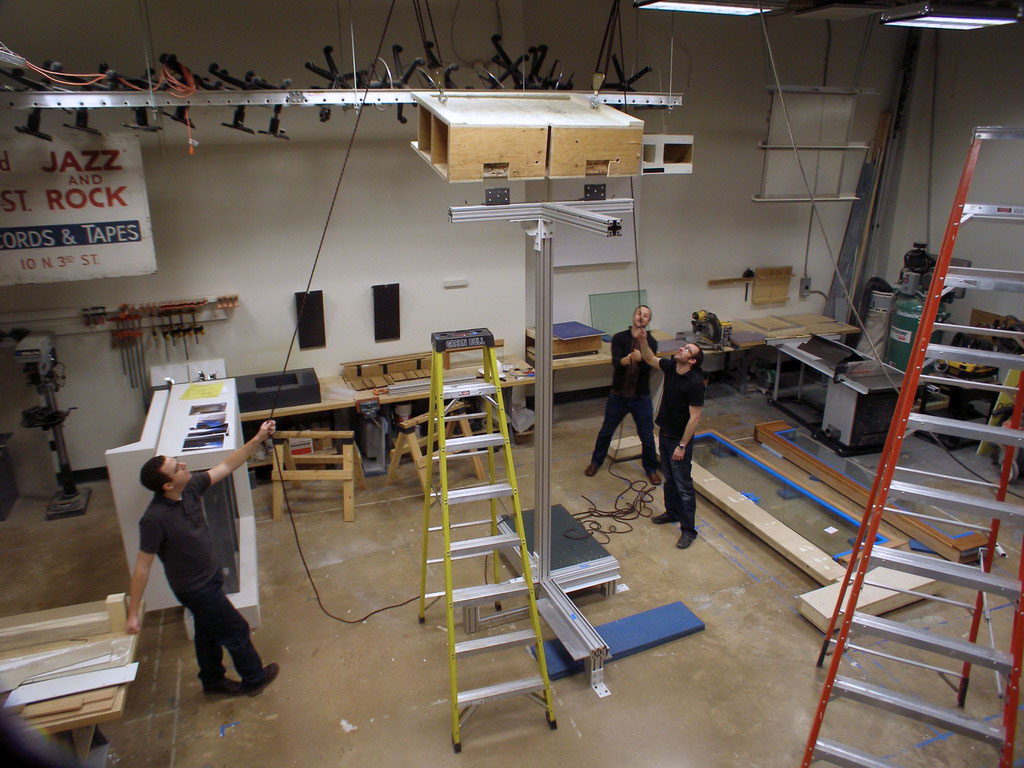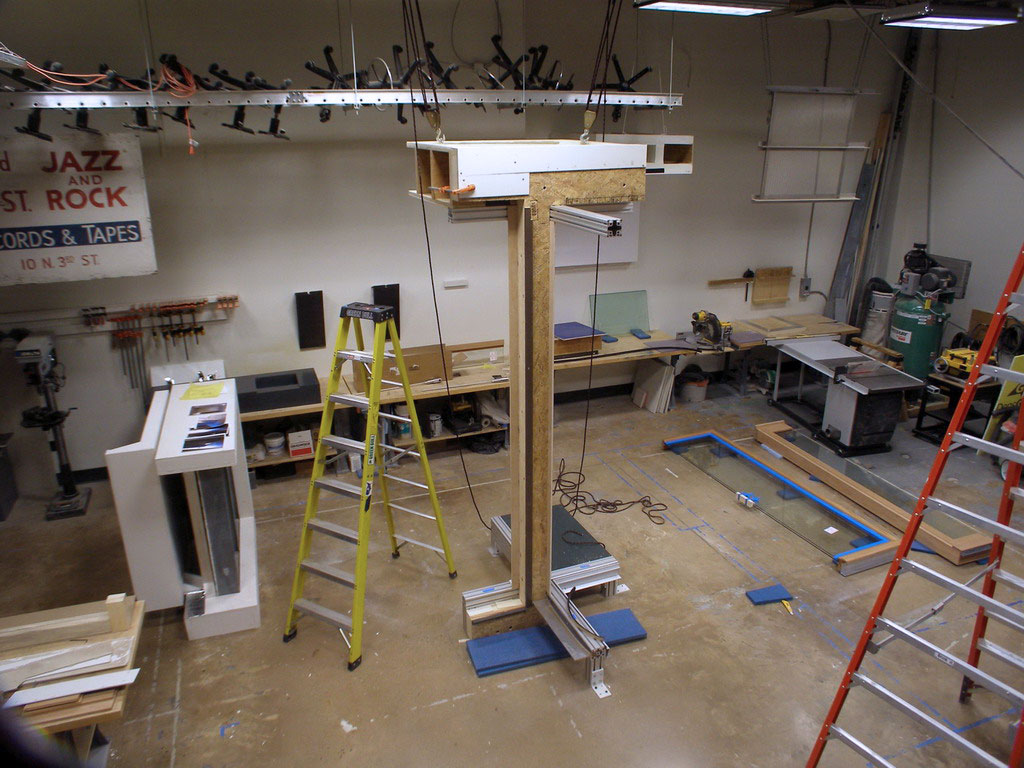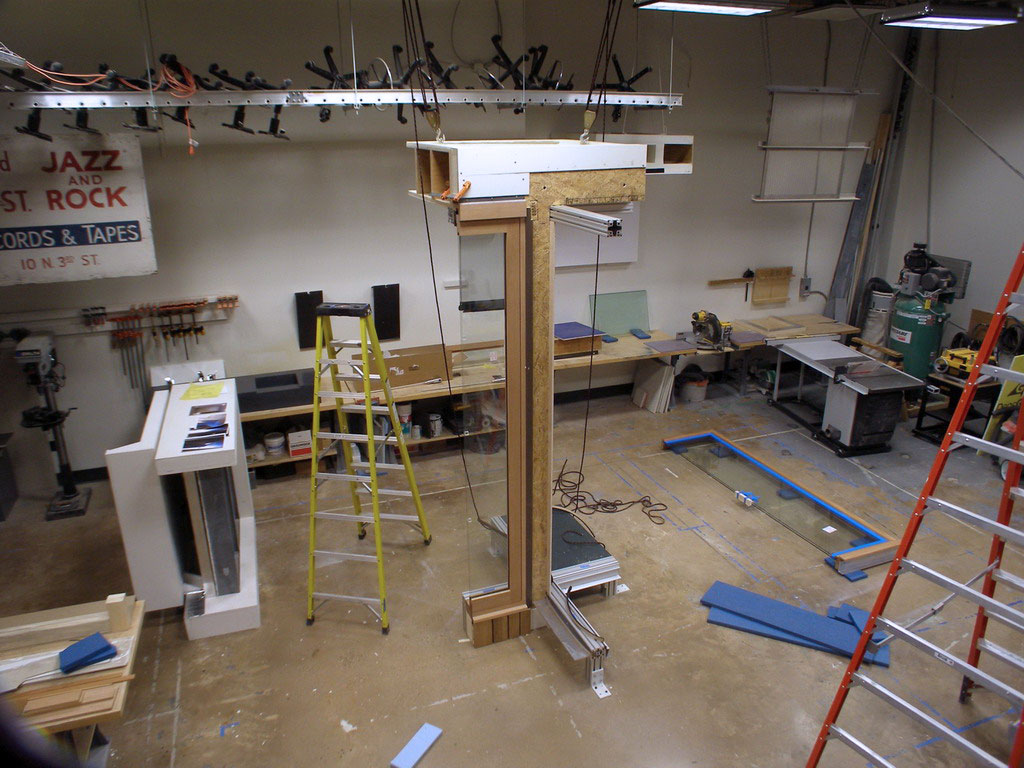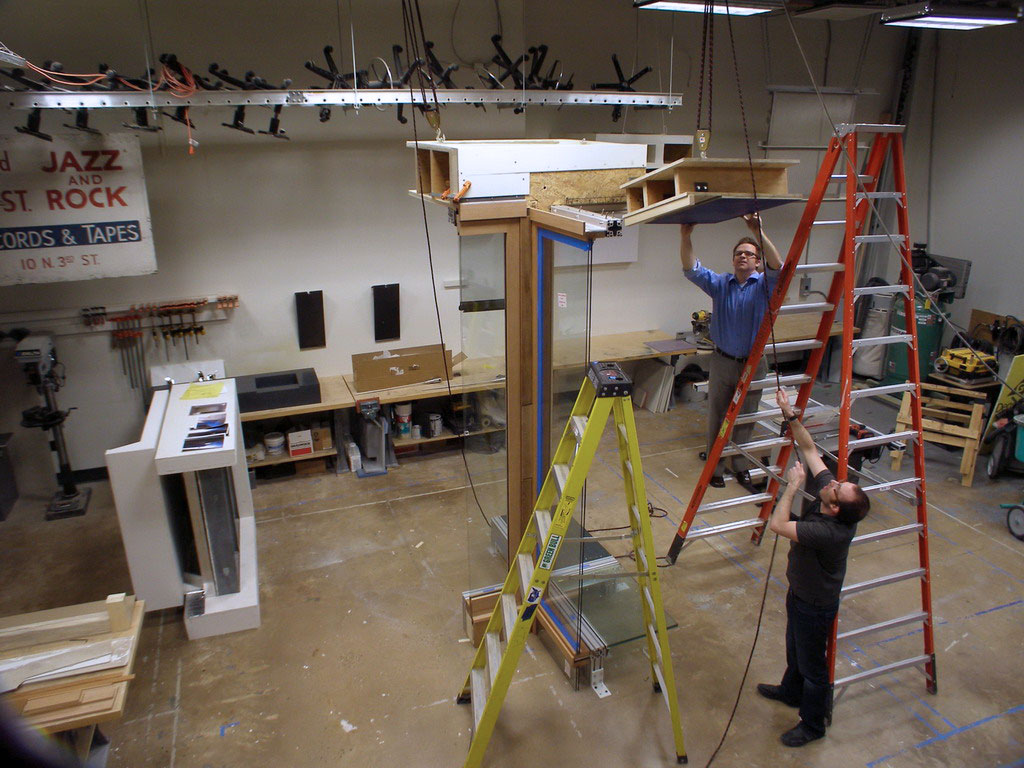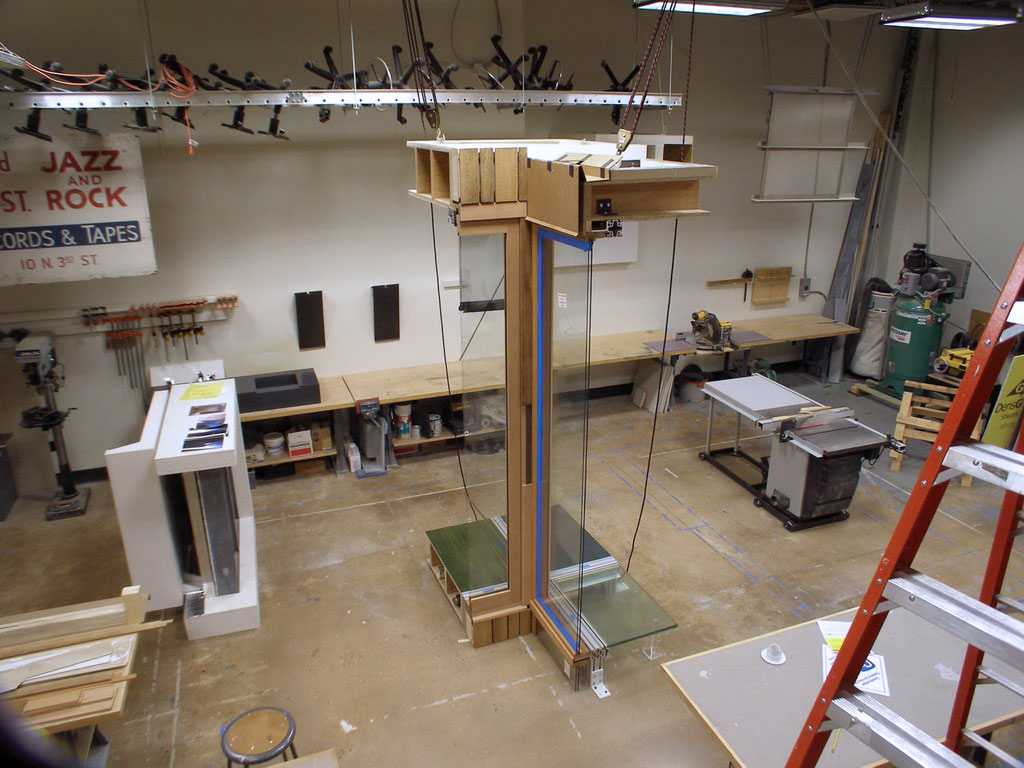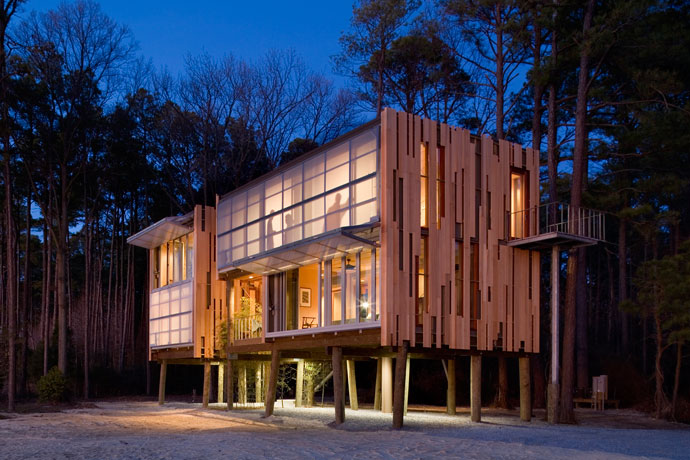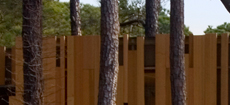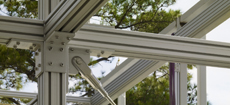Report from the Shop: Making a Full-Scale Critical Detail of Loblolly House
The built detail (left) and the reconstructed detail (right), under inspection by Stephen Kieran, Shop Manager Peter Curry, and Research Director Billie Faircloth.
Loblolly House was built in just six weeks in 2006, inaugurating a novel approach to building off site using integrated component assemblies that are factory-built and assembled together on site. We recently constructed a full-scale critical detail of Loblolly House in our Philadelphia shop, and it is currently on display at the Cooper-Hewitt, National Design Museum's National Design Triennial, Why Design Now? exhibition, on view from May 14-January 9, 2011.
In the same way that an anatomical section provides insight into the body, this critical detail offers a view of the house's physical properties beyond what can be learned from drawings or photographs.
Measuring 4 x 6 x 11 feet and weighing approximately 1,000 pounds, the Loblolly House detail contains the aluminum frame and steel connectors that support the building; a section of the fully integrated floor and ceiling cartridges containing radiant heating, micro-ducted cooling, ventilation, and power; glass and metal floor components; and wall cartridges with integrated windows, interior birch ply finishes and exterior cedar rain screen cladding.
The detail assembly followed roughly the same sequence as Loblolly House, beginning by erecting the aluminum frame and bolting the other components to it. To ensure that this building fragment could be freestanding at the Cooper-Hewitt, the vertical systems—specifically the roof cartridges and roof framing—needed to function nearly unsupported while some of the loads are transferred through the window units. This was achieved by using special fastening brackets to support the framing and by connecting the vertical systems together so they would act as a single unit.
The critical detail was assembled in our shop, disassembled, shipped and re-assembled at the museum. This allowed us to re-engage the design for the disassembly principle central to the Loblolly House: that it can be disassembled as readily and swiftly as it was assembled, keeping the various elements whole for re-use in the future.
A photo sequence of the building process follows.
Materials for the model were generously provided by Bensonwood, Loewen, Innovative Building Products, Inc., Artistic Doors and Windows, Inc., and Bill Curran Design, with structural engineering consultation provided by CVM Engineers.



